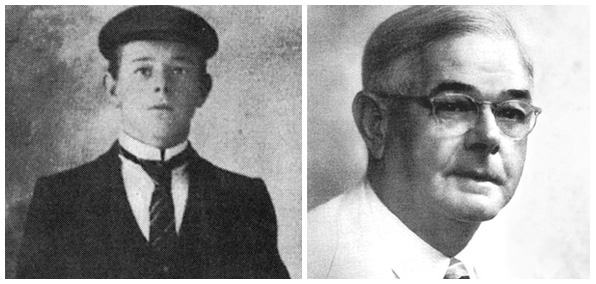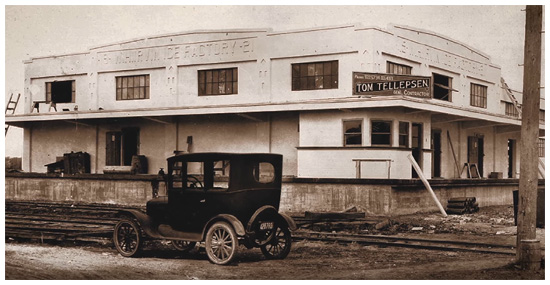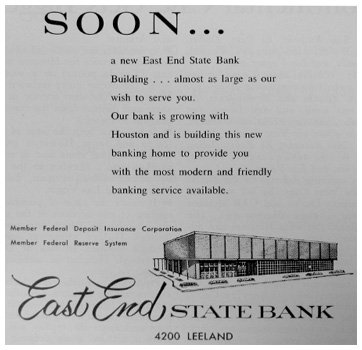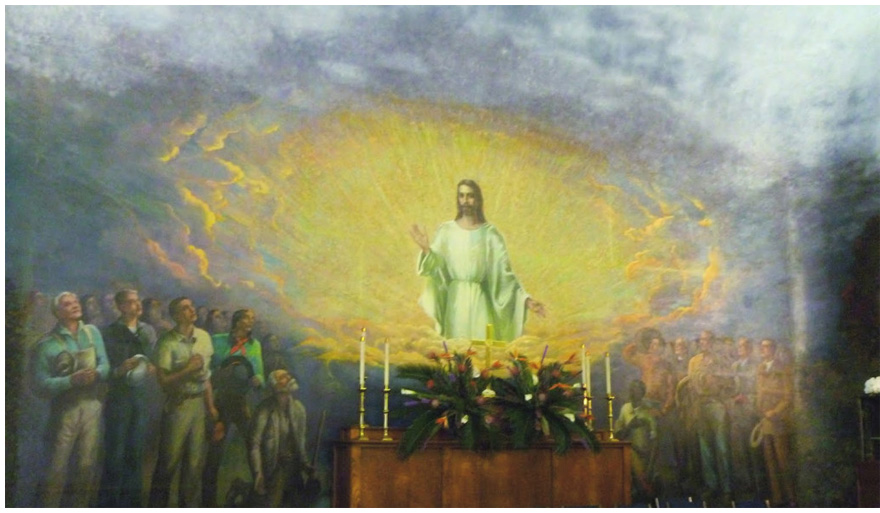Introduction to History and Heroes
This is the first in a series of articles designed to honor the rich heritage of the commercial construction industry in Houston. The series will focus primarily on people and their companies, as many fine publications already tell the stories of Houston’s most recognized buildings and acclaimed structures. It will feature general and specialty contractors, but with discussion of their essential partners, owners, architects and engineers. The articles are meant to be educational and inspirational, creating pride in our shared and abundant inheritance.
All of us in the industry today are beneficiaries of their remarkable achievements. Yet, the current levels of prosperity and stability achieved by these multiple generation firms often obscure the struggle and sacrifice of their early days. Their repeated success in present times stands in sharp contrast to the monthly questions of survival that plagued their formative years.
The hallmark common characteristics of these pioneering founders were competency, courage, and character – reinforced by faith and optimism. They lived by principles and values that formed the deep foundations of their companies and the building blocks of their cultures. They dealt with everyone employing honesty and integrity, and with their building partners demonstrating respect and collaboration, as well. These professional relationships, often true friendships continued by their successors, are what distinguishes the commercial construction community in Houston from other markets. All on watch today must honor, preserve, and expand this unique legacy. - Pat Kiley
Tellepsen We begin this new Construction Citizen blog series with Tellepsen, Houston’s oldest, locally owned, commercial general contractor. They opened in Houston in 1909 and are now being led by Tadd Tellepsen and his brothers, Tellef, Trent and Trevor, the fourth generation to run the company. Their father, community and industry leader Howard Tellepsen Jr., remains Chairman of the Board. For any construction company to pass the 100-year milestone in this high-risk, cyclical industry is an amazing feat. But the story of this company, especially their earliest years, makes this achievement even more remarkable!
We begin this new Construction Citizen blog series with Tellepsen, Houston’s oldest, locally owned, commercial general contractor. They opened in Houston in 1909 and are now being led by Tadd Tellepsen and his brothers, Tellef, Trent and Trevor, the fourth generation to run the company. Their father, community and industry leader Howard Tellepsen Jr., remains Chairman of the Board. For any construction company to pass the 100-year milestone in this high-risk, cyclical industry is an amazing feat. But the story of this company, especially their earliest years, makes this achievement even more remarkable!
It all began in Norway, in the small seaport town of Tvedestrand on the southeast coast, now with 6000 inhabitants. This number grew in June 2018 when 31 members of the Tellepsen Family came to this beautiful community with traditional, well-maintained, white multi-story homes and flowing fjords, to see their company founder, Torjus Tellefsen, honored. Torjus, whose American name became Tom Tellepsen, is the grandfather of Howard. Howard’s brother Tom, sister Karen, and cousin Bob were all there – as were 27 more 4th and 5th generation grandchildren and their families. On June 13, at the opening of a revitalized town square, Tellepsen Park and Tom’s Bridge were dedicated – a high honor for their former citizen, whom many consider the town’s most accomplished native. He had received Norway’s highest honor in 1959: The Saint Olav Medal of King Haakon. This wonderful family event prompted the full story of Tom’s journey, almost inconceivable today. At age 14, in 1902, he left Tvedestrand, with his small valise and his widowed mother’s blessing based on a deep faith they both shared. Tom’s dad, Tellef Halvorsen, had been killed in a construction accident in 1890 on the Williamsburg Bridge in New York City, when, as a carpenter-foreman, he elected to perform a very dangerous task himself rather than ask one of his men to do it. Only his tools were returned, which Tom’s mother, Tora, sold to upgrade her sewing machine; she was an accomplished seamstress who now needed to feed two growing boys. Until he left home, Tom did all types of odd jobs to bring money into the home: by age 9 he was sweeping floors in the local bank and cleaning out ship boilers because he was small enough to fit inside. But as Tvedestrand in those days had only 750 people, opportunities to help his mom were limited. So, to earn more reliable money, Tom became a cabin boy on a three-mast, two-squared-rigged sailing craft that paid $3 per month for his services. He sailed around the world twice, entered the US through Ellis Island in 1905, became a carpenter, then foreman in New York City working on a housing project and remodeling a concession stand at Coney Island.
This wonderful family event prompted the full story of Tom’s journey, almost inconceivable today. At age 14, in 1902, he left Tvedestrand, with his small valise and his widowed mother’s blessing based on a deep faith they both shared. Tom’s dad, Tellef Halvorsen, had been killed in a construction accident in 1890 on the Williamsburg Bridge in New York City, when, as a carpenter-foreman, he elected to perform a very dangerous task himself rather than ask one of his men to do it. Only his tools were returned, which Tom’s mother, Tora, sold to upgrade her sewing machine; she was an accomplished seamstress who now needed to feed two growing boys. Until he left home, Tom did all types of odd jobs to bring money into the home: by age 9 he was sweeping floors in the local bank and cleaning out ship boilers because he was small enough to fit inside. But as Tvedestrand in those days had only 750 people, opportunities to help his mom were limited. So, to earn more reliable money, Tom became a cabin boy on a three-mast, two-squared-rigged sailing craft that paid $3 per month for his services. He sailed around the world twice, entered the US through Ellis Island in 1905, became a carpenter, then foreman in New York City working on a housing project and remodeling a concession stand at Coney Island.
In 1906, like many ambitious young construction workers, Tom left to work on the high-profile Panama Canal Project. His wages were $5 per day, most of which he sent to his mother. He and many other workers contracted malaria, a debilitating infectious disease caused by bites from the swarming mosquitos that thrived in Panama’s tropical climate. Those infected were given up to 14 grams of Quinine per day as an anecdote for their high fevers, which impaired consciousness and induced respiratory distress and shaking chills. Tom heard a doctor who had observed him in the tent hospital throughout one day say, “Tellepsen is a goner for sure.” The fever broke that night and he reported to work the following day, which caused quite a stir. Those strong survival instincts in Tom’s DNA would serve his grandson, Howard Jr, well in future years. In 1909, at 21 years old, Tom came to Houston, then a city of only 65,000 people, because he remembered his 7th-grade geography teacher saying, “Texas is the new frontier.” That Norwegian educator was an accurate prophet, and Tom’s timing was superb. Texas was booming as the cattle and cotton capital of the world, and Houston was just starting to explode as an oil town. The Spindletop Field at Beaumont spewed its first black gold in 1901; the Humble Oil fields followed in 1905; and the visionary, dynamic Jesse Jones was driving Houston’s growth – ensuring the ship channel and port were upgraded and constructing office buildings to attract the emerging major oil industry players. Oil-related companies were launched daily – so were their support services: legal, accounting, and banking – and people were flocking to the city for work. They needed homes and facilities: perfect conditions for this trustworthy, ethical, gritty Norwegian immigrant to establish roots.
In 1909, at 21 years old, Tom came to Houston, then a city of only 65,000 people, because he remembered his 7th-grade geography teacher saying, “Texas is the new frontier.” That Norwegian educator was an accurate prophet, and Tom’s timing was superb. Texas was booming as the cattle and cotton capital of the world, and Houston was just starting to explode as an oil town. The Spindletop Field at Beaumont spewed its first black gold in 1901; the Humble Oil fields followed in 1905; and the visionary, dynamic Jesse Jones was driving Houston’s growth – ensuring the ship channel and port were upgraded and constructing office buildings to attract the emerging major oil industry players. Oil-related companies were launched daily – so were their support services: legal, accounting, and banking – and people were flocking to the city for work. They needed homes and facilities: perfect conditions for this trustworthy, ethical, gritty Norwegian immigrant to establish roots.
Tom attended architectural drawing classes at the YMCA, a fact the family honored with the dedication of the Tellepsen Family Downtown YMCA 100 years after their grandfather arrived. Tom’s drawings of a home for his YMCA class were so impressive that his teacher sent it to the newspaper, which published it. The photo appealed to a couple with financial means wanting to build a house in the Montrose area. This house became his first project. It still stands today, serving as the home of the history department at the University of St Thomas. By the 1920’s, Tom, still a young man in his 30’s, built several Houston Landmarks fully in use today: Miller Outdoor Theater, The Chemistry Building at Rice University, Palmer Memorial Episcopal Church, The Museum of Fine Arts, and The Anderson Clayton Long reach Wharves at the Port of Houston.
Tom’s sincerity, competency, and character gave him great acceptance in Houston’s welcoming melting pot of diverse races and cultures, overcoming any challenges with language or age. He was a man with deep values and exceptional faith.  Over the years, he marched his company through the great depression and two world wars, leaving a trail of structures that serve this community and a record of personal service, rare and inspiring. He returned to Tvedestrand in 1912 to marry his childhood sweet heart, Ingeborg Larsen. The couple settled in the Eastwood area, a rapidly growing southeast Houston suburb, where many craftsman and artists lived. In 1916, the couple built a home in the architectural style known as a “hangar house” or “craftsman house” with large windows and deep caves. It stands today, an historical landmark at 4518 Park Drive. They had two daughters and a son, Howard Sr, who would join his father in 1934, following graduation from Georgia Tech.
Over the years, he marched his company through the great depression and two world wars, leaving a trail of structures that serve this community and a record of personal service, rare and inspiring. He returned to Tvedestrand in 1912 to marry his childhood sweet heart, Ingeborg Larsen. The couple settled in the Eastwood area, a rapidly growing southeast Houston suburb, where many craftsman and artists lived. In 1916, the couple built a home in the architectural style known as a “hangar house” or “craftsman house” with large windows and deep caves. It stands today, an historical landmark at 4518 Park Drive. They had two daughters and a son, Howard Sr, who would join his father in 1934, following graduation from Georgia Tech.
Certainly, Tom left a great legacy as builder, one that continues and expands today. But he also left a great legacy of service to the industry. He was a founding member of the Houston AGC, and served as president, as did his son and grandson. And for many years, he would lend the chapter money to make it until the first of the year when they could once again bill for annual dues. However, it was his commitment to the east end organizations that make he and his wife so treasured there, yet today. They became pillars of the Episcopal Church of the Redeemer, building the educational building, rectory, and church with his personally designed mural, “God of the Workingman.” He gave generously to the East End YMCA, donating a building extension and funding their annual shortfalls. He and his family have been contributing to the YMCA with both funds and leadership for over 100 years, in gratitude for the role that institution played in his life; and the family has supported the Boy Scouts for over 70 years. Tom believed in the positive impact of these groups in the lives of young men, so it was not surprising that in 1947 he and a group of other businessmen established Boys Harbor at the Ross Sterling donated White House on Morgan’s Point in La Porte, Texas for abused, abandoned, and neglected children.
One of the most inspiring events of this courageous man’s marvelous story occurred on September 18, 1946, when, 48 years after he had swept floors in the small bank in Tvedestrand, Tom resumed his career in banking as founder, major shareholder, and chairman of East End State Bank. Their building at 4215 Leeland St has been designated a Houston Preservation Society Historical Landmark site. It is highly understandable that both Tellepsen Street and Ingeborg Street exist today in the east end, a fitting tribute to this generous couple’s enormous contributions. Tom died in 1975 – Ingeborg in 1980. Their heirs keep their strong commitments to faith, family, service to others, and integrity in all matters, and the company that bears the family name is thriving as never before.
In the next History and Heroes article, we will discuss the second- and third-generation Tellepsen leaders.
History and Heroes – Tellepsen: Part One
by Pat Kiley | October 18, 2018


